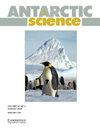Nimble vessel cruises as a complementary platform for Southern Ocean biodiversity research: concept and preliminary results from the Belgica 121 expedition
IF 2
4区 地球科学
Q3 ENVIRONMENTAL SCIENCES
引用次数: 0
Abstract
Abstract The western Antarctic Peninsula is facing rapid environmental changes and many recent publications stress the need to gain new knowledge regarding ecosystems responses to these changes. In the framework of the Belgica 121 expedition, we tested the use of a nimble vessel with a moderate environmental footprint as an approach to tackle the urgent needs of the Southern Ocean research community in terms of knowledge regarding the levels of marine biodiversity in shallow areas and the potential impacts of retreating glaciers on this biodiversity in combination with increasing tourism pressure. We discuss the strengths and drawbacks of using a 75’ (23 m) sailboat in this research framework, as well as its sampling and environmental efficiency. We propose that the scientific community considers this approach to 1) fill specific knowledge gaps and 2) improve the general coherence of the research objectives of the Antarctic scientific community in terms of biodiversity conservation and the image that such conservation conveys to the general public.灵活的船只巡航作为南大洋生物多样性研究的补充平台:比利时121远征的概念和初步结果
摘要南极半岛西部正面临着快速的环境变化,许多最近的出版物强调需要获得关于生态系统对这些变化的反应的新知识。在Belgica 121探险队的框架内,我们测试了使用一艘环境足迹适中的灵活船只,以此来满足南大洋研究界对浅水区海洋生物多样性水平的迫切需求,以及冰川退缩对这种生物多样性的潜在影响,再加上旅游业压力的增加。我们讨论了在这个研究框架中使用75英尺(23米)帆船的优点和缺点,以及它的采样和环境效率。我们建议科学界考虑这种方法,以1)填补特定的知识空白,2)提高南极科学界在生物多样性保护方面的研究目标的总体一致性,以及这种保护向公众传达的形象。
本文章由计算机程序翻译,如有差异,请以英文原文为准。
求助全文
约1分钟内获得全文
求助全文
来源期刊

Antarctic Science
地学-地球科学综合
CiteScore
3.60
自引率
6.20%
发文量
42
审稿时长
3 months
期刊介绍:
Antarctic Science provides a truly international forum for the broad spread of studies that increasingly characterise scientific research in the Antarctic. Whilst emphasising interdisciplinary work, the journal publishes papers from environmental management to biodiversity, from volcanoes to icebergs, and from oceanography to the upper atmosphere. No other journal covers such a wide range of Antarctic scientific studies. The journal attracts papers from all countries currently undertaking Antarctic research. It publishes both review and data papers with no limits on length, two-page short notes on technical developments and recent discoveries, and book reviews. These, together with an editorial discussing broader aspects of science, provide a rich and varied mixture of items to interest researchers in all areas of science. There are no page charges, or charges for colour, to authors publishing in the Journal. One issue each year is normally devoted to a specific theme or papers from a major meeting.
 求助内容:
求助内容: 应助结果提醒方式:
应助结果提醒方式:


